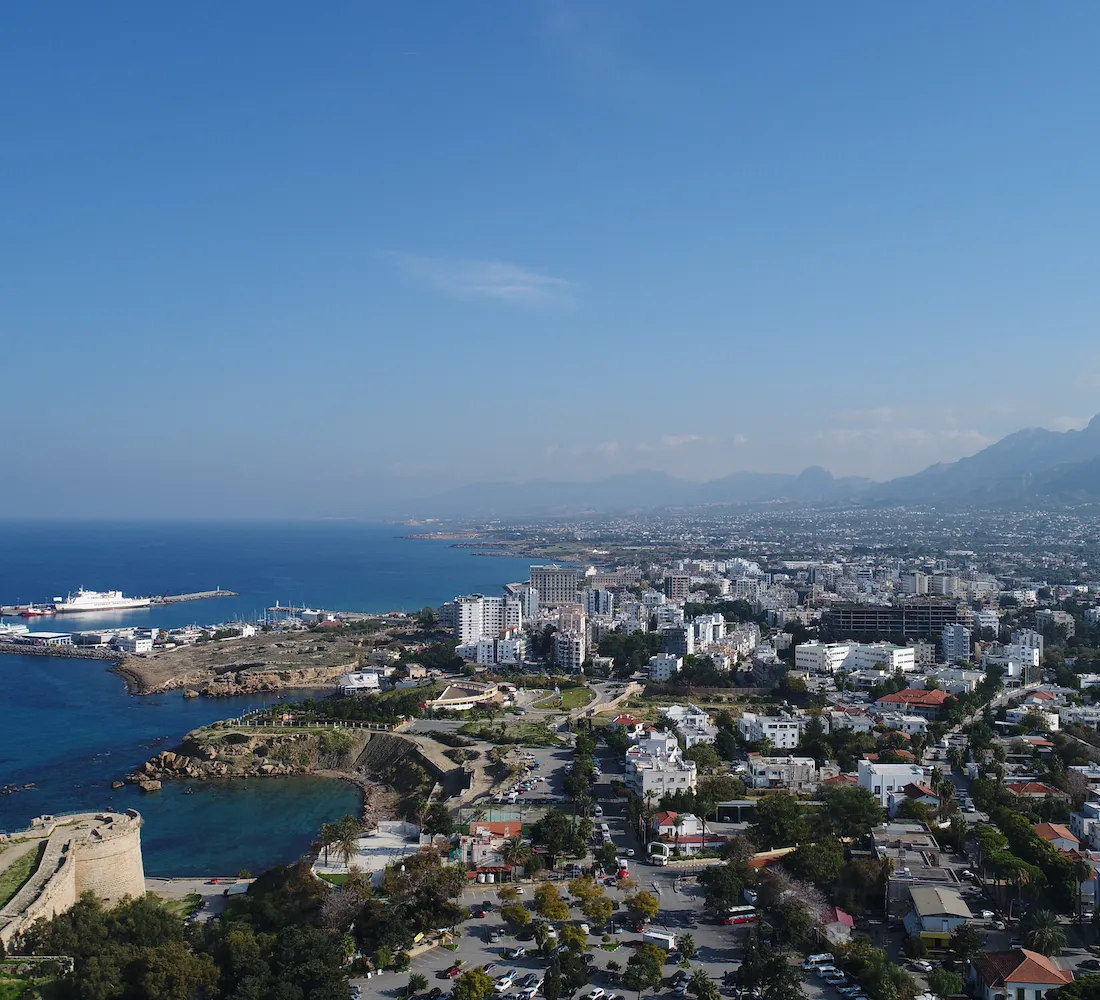The question, "Are Istanbul's buildings earthquake-resistant?" always sparks the interest of investors and residents alike, especially given the city's active urban development and its proximity to the North Anatolian Fault.
In this comprehensive article, we review Istanbul's earthquakes and the resilience of its buildings throughout history, and we analyze the Istanbul 6.2 earthquake that occurred on April 23, 2025.
We will highlight the details of building earthquake resistance in Istanbul, present the earthquake-resistant building codes in Istanbul, explain the earthquake resistance standards in Istanbul properties, and showcase the modern technologies adopted by new buildings in Istanbul for earthquake resistance.
We also shed light on earthquake safety measures in Istanbul buildings and the role of the Turkish government in promoting building resilience.
Overview of Building Earthquake Resistance in Istanbul
Building earthquake resistance in Istanbul focuses on designing structures to withstand the horizontal and vertical forces resulting from ground shaking. Engineers rely on:
- Reinforcing columns and bridges with steel plates and high-strength concrete.
- Calculating seismic accelerations using advanced dynamic analysis models.
- Applying earthquake resistance standards in Istanbul properties issued by the Ministry of Environment and Urban Planning.
A Historical Overview of Istanbul Earthquakes and Building Resilience
Over the centuries, the city has experienced several violent tremors that have underscored the need for earthquake resistance in Istanbul buildings:
- The 1509 Earthquake and Its Impact
- It reached a magnitude of between 7.0 and 7.4, destroying thousands of mud houses.
- It led to a re-evaluation of traditional building methods.
- The 1766 Earthquake and Lessons Learned
- Two successive tremors struck eastern Istanbul in May and August 1766.
- They prompted the Ottoman authorities to use reinforced limestone in bridges and important buildings.
- The 1999 Izmit Earthquake and Construction Reforms
- It reached a magnitude of 7.6, resulting in tens of thousands of deaths and injuries.
- The Turkish government urgently introduced amendments to the earthquake-resistant building codes in Istanbul, including:
- Mandatory geotechnical reports for sites.
- Raising the standards for concrete and reinforcing steel materials.
- Establishing central supervisory bodies to monitor code implementation.
The Istanbul 6.2 Earthquake on April 23, 2025: Details of the Impact and Resilience
- Epicenter and Measurement Records
- The earthquake occurred at 12:49 Turkey time, with its epicenter in the Sea of Marmara, 21 km southeast of Istanbul. It reached a magnitude of 6.2 on the Richter scale, with a reading of IX on the Modified Mercalli Intensity Scale.
- Damage Assessment and Building Resilience
- Despite the strong tremor, most modern buildings recorded superior resilience thanks to new buildings in Istanbul and earthquake resistance through:
- Base Isolation Technology.
- Tuned Mass Dampers.
- Government Response and Recovery Measures
- Emergency shelters were established, and schools were temporarily closed to implement earthquake safety measures in Istanbul buildings. Experts from AFAD and rescue teams began rapid inspection operations to ensure the safety of structures.
Is Istanbul Safe from Earthquakes? A Reading of Modern Studies
The question of whether Istanbul is safe from earthquakes is linked to the extent to which the concerned parties adhere to applying the details of building earthquake resistance in Istanbul:
- Studies by AFAD and Bogazici University confirm that more than 70% of buildings constructed after 2007 meet seismic code standards.
- New urban development projects rely on non-linear dynamic analysis models to measure the performance of buildings under seismic loads.
Details of Building Earthquake Resistance in Istanbul: The Legal Framework
The application of earthquake-resistant building codes in Istanbul is based on a set of legislation and regulations:
- Urban Transformation Law No. 6306 (2012):
- Mandates the demolition and renovation of dangerous buildings in accordance with earthquake resistance standards.
- The Revised Turkish Code (2019):
- Requires certificates from accredited consulting offices and the conduct of spectral analyses.
- Instructions from the Ministry of Environment and Urban Planning (2020):
- Imposes periodic field supervision and NDT inspections on construction materials.
Earthquake Resistance Standards in Istanbul Properties
Earthquake resistance standards in Istanbul properties are embodied in:
- Material Quality and Strength Tests
- Use of C40 and higher grade concrete and reinforcing steel with properties conforming to European standards.
- Conducting compression and bending tests and ultrasonic inspections.
- Spectral Analysis and Dynamic Response
- Applying spectral models that simulate ground acceleration for any potential earthquake scenario.
- Adopting designs that allow flexural ductility to prevent sudden collapse.
New Buildings in Istanbul and Earthquake Resistance
Base Isolation and Tuned Mass Damper technologies have brought about a qualitative shift in new buildings in Istanbul and earthquake resistance:
- Base Isolation: Rubber platforms and silicone mattresses reduce the transmission of seismic energy to the structure.
- Tuned Mass Dampers: A moving mass inside the building absorbs vibrations by up to 60%.
- Ductile Beams: Support the distribution of seismic forces homogeneously.
Building Earthquake Resistance in Istanbul: The Role of Concrete and Steel Structures
The properties of the concrete and steel structure play a major role in building earthquake resistance in Istanbul:
- Reinforced Concrete Structures
- Providing stiffness and fluidity to withstand horizontal loads.
- Using silica fume to improve concrete viscosity.
- Steel Structures
- Lightweight and capable of bending without breaking.
- Hinged joints and special screws prevent slippage.
Earthquake Safety Measures in Istanbul Buildings
Earthquake safety measures in Istanbul buildings enhance the preparedness of residents and infrastructure:
- Periodic Evacuation Drills: In schools, residential complexes, and government institutions.
- Early Warning Services: Phone applications send messages before the arrival of seismic waves.
- Safe Assembly Point Maps: Their location is marked at the entrance and on the internal signs of each residential complex.
The Impact of Earthquakes on Buildings in Istanbul: Case Studies and Field Experiments
Reports on the impact of earthquakes on buildings in Istanbul document the condition of a number of facilities:
- Marmara East Tower (2025): It stood completely despite the 6.2 tremor, thanks to base isolation.
- Taksim Infinite Complex (2023): Underwent column extension and reinforcement bars before the 5.8 tremor without any cracks.
The Role of the Turkish Government in Promoting Building Earthquake Resistance
The Turkish government contributes effectively to the details of building earthquake resistance in Istanbul through:
- Field assessment of more than 7,000 buildings in the past two years.
- Strengthening and renovation projects in cooperation with reputable engineering offices.
- Awareness workshops for investors and owners about earthquake safety measures in Istanbul buildings and best practices.
Frequently Asked Questions Are Istanbul's Buildings Earthquake-Resistant? Find Out the Details
- Is Istanbul Safe from Earthquakes?
- Despite its proximity to the North Anatolian Fault, adherence to earthquake resistance standards in Istanbul properties and modern codes makes it relatively safer.
- What are the details of building earthquake resistance in Istanbul?
- They include the use of base isolation, tuned mass dampers, non-linear spectral analysis, and quality of construction materials.
- How did the government deal with past mistakes after the 1999 earthquake?
- Urgent amendments were issued in the earthquake-resistant building codes in Istanbul in 2000, 2007, and 2018, in addition to establishing supervisory bodies and seismic monitoring centers.
- What was the impact of the 6.2 earthquake on buildings in Istanbul?
- There was no significant structural collapse thanks to new buildings in Istanbul and earthquake resistance and base isolation technologies.
- What is the role of the Turkish government in promoting building resistance?
- It conducts a comprehensive assessment of existing buildings, coordinates strengthening projects, and organizes workshops to raise awareness of the details of building earthquake resistance in Istanbul.
Conclusion: Are Istanbul's Buildings Earthquake-Resistant? Find Out the Details
In this article, entitled "Are Istanbul's Buildings Earthquake-Resistant? Find Out the Details," we have confirmed the history of Istanbul's earthquakes and the resilience of its buildings. We have reviewed the recent Istanbul 6.2 earthquake, and we have examined the details of building earthquake resistance in Istanbul and its laws, in addition to earthquake resistance standards in Istanbul properties and modern technologies in new buildings in Istanbul and earthquake resistance.
We also highlighted earthquake safety measures in Istanbul buildings and the role of the Turkish government in promoting building resilience.
The question remains open, but what is certain is that Istanbul today is more capable of facing future ground tremors thanks to the continuous cooperation between the government, developers, and technicians.






